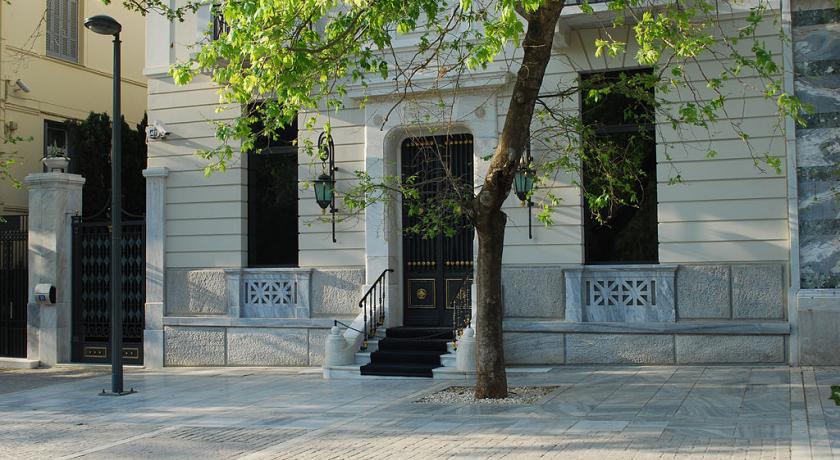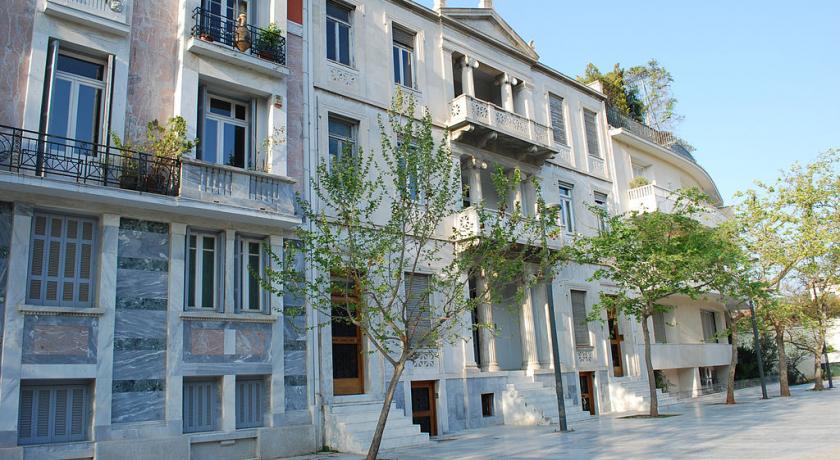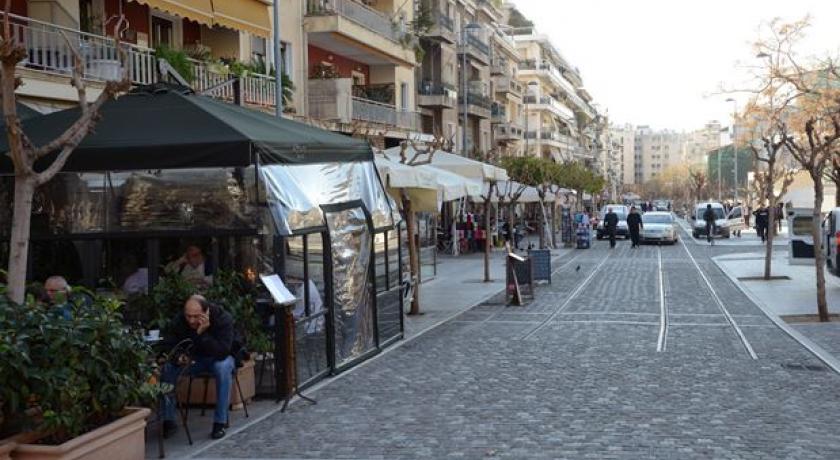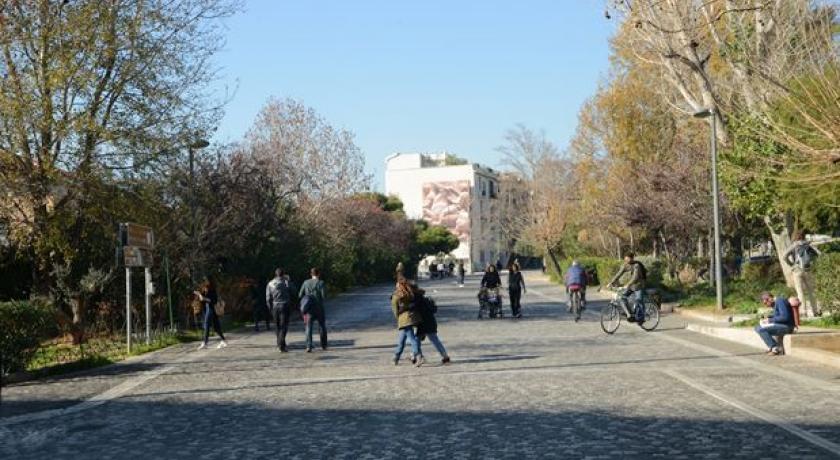Description
Dionysiou Areopagitou Street (Greek: Οδός Διονυσίου Αρεοπαγίτου, Greek pronunciation: [oˈðos ðjoniˈsiu areopaˈʝitu]) is a pedestrianized street, adjacent to the south slope of the Acropolis in the Makrygianni district of Athens. It is named after Dionysius the Areopagite, the first Athenian convert to Christianity after Apostle Paul's sermon, according to the Acts of the Apostles.
The street runs from east to west. It starts from Amalias Avenue near the Arch of Hadrian and ends near Philopappos Hill where it continues as Apostolou Pavlou Street, the rest of the pedestrian zone which goes around the archaeological site of the Acropolis and the Agora.
The street was first mapped in 1857 in a more northern than today's position, adjacently to the Odeon of Herodes Atticus. It was redesigned and acquired its shape in 1955 by architect Dimitris Pikionis who also designed the paved paths of the archaeological site. The street was finally pedestrianized in 2003.
Buildings and monuments
The beginning of the street near Amalias Avenue has buildings on both sides. However, after Makrygianni Street, buildings cease on the north side and give place to the archaeological site of the Acropolis. Near is the entrance to the ancient Theatre of Dionysus. On the south side is the Acropolis Museum and an upmarket residential district with apartment buildings and houses. Near the end is the entrance to the Odeon of Herodes Atticus. In the middle of the street were found the foundations of the house of Proclus.
source https://en.wikipedia.org/wiki/Dionysiou_Areopagitou_Street
Address
Athens
Greece
Lat: 37.969635010 - Lng: 23.726898193








